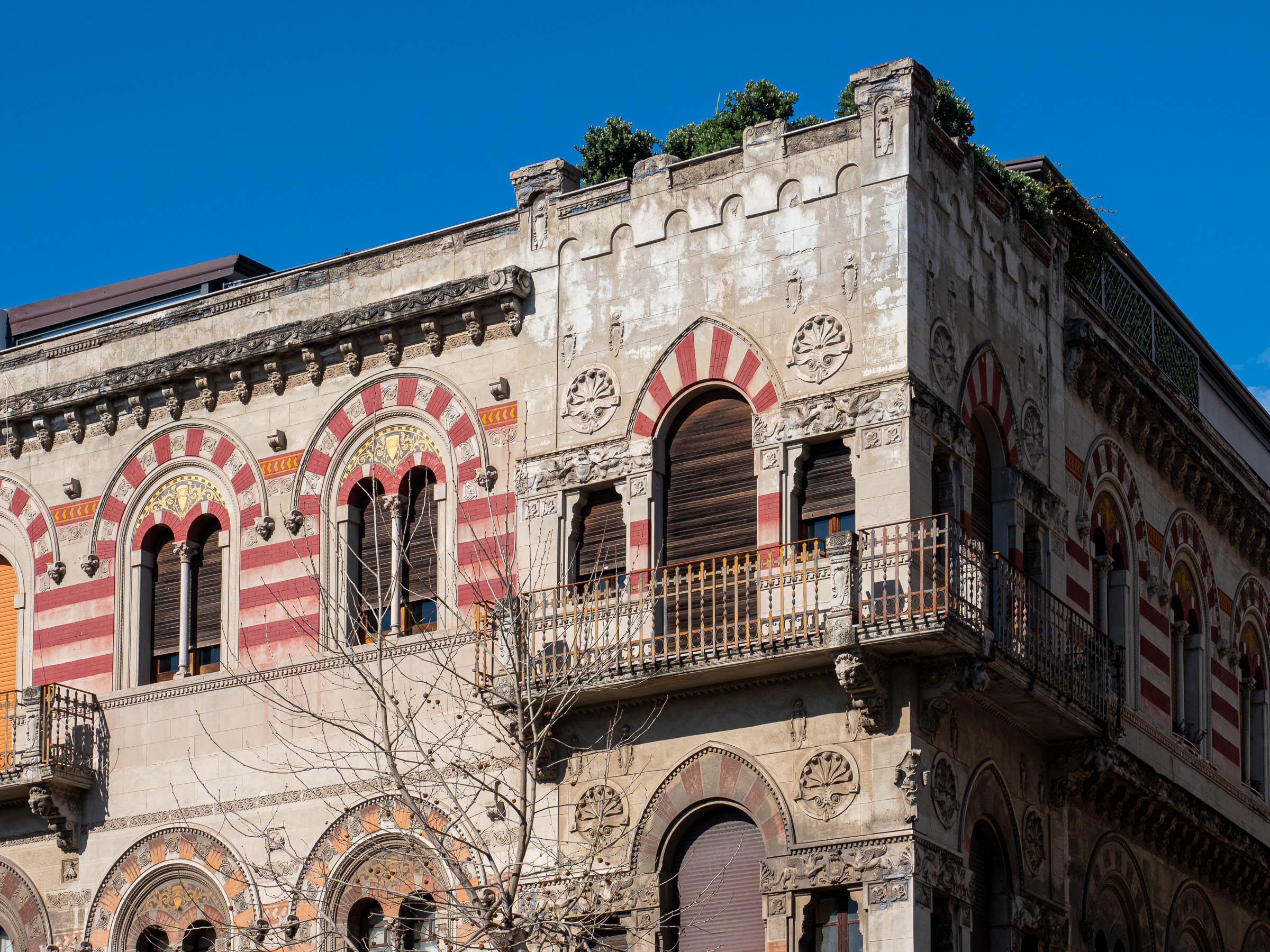My time in Sicily was spent mostly in Messina, the region where my parents came from and where I still have family, followed by a few days in Palermo, the capital of Sicily. My brief stay in Catania I’ve already written up in another post. While there were similarities between Messina and Palermo, there were also striking differences.
The first thing that strikes you about Messina is the geography. Messina is built on a narrow strip of land on the Straits of Messina which curves round to a point where the Italian mainland is only three kilometres away. It’s a narrow strip because steep and rugged hills rise quickly as you move away from the shore, and in places the developed area is barely a kilometre wide. The proximity of Messina to the mainland and the strategic location of Sicily means that Messina is a bustling port, with ferries in particular constantly ploughing their way across the Straits.
The steeply rising land has resulted in Messina being built in a terraced fashion, and it’s not unusual to be strolling along a footpath and look down on traffic 20 metres or more below, or walk past the fourth floor of a building only a few metres away. The terraces are connected by steep and winding streets and a large number of “scalinate” or stairways of varying length - the longest I climbed was 140 steps in 12 flights. Some of the scalinate are quite functional in construction, while others are ornate architectural gems, of at least they were before they fell into disrepair.
The other thing you notice about Messina is that it feels quite new, which is odd for a city with 2,500 years of history. The reason is the earthquake of 1908 and subsequent tsunamis which killed half the population and destroyed the city. Few buildings were left standing, and even those were subsequently razed and replaced by an architecturally planned re-development. The older parts of the city still reflect this planning, while not surprisingly the newer parts have adopted a much more utilitarian approach.
Palermo is built on the Conca D’oro (Golden Basin) a wide sweep of (mainly) flat and fertile land, so it’s much more walking-friendly than Messina. It hasn’t suffered a catastrophic event like Messina (and Catania for that matter, having been wiped out by an eruption of Etna in 1669), so its history is a little more visible. What you can see in the architecture is evidence of some of the waves of invasion which have swept across Sicily. The main styles are Byzantine, Normano-Arabic and primarily Baroque, due to the long dominance of the Spanish Bourbon dynasty.
Its one-time prominence as a major cultural centre can be seen in its opulent neo-renaissance opera house, and its wealth in the massive marble fountain, purchased in Florence and rebuilt like a jigsaw in Palermo. It continued to be a prominent European centre until the 20th century saw a period of decline. As recently as ten years ago, the historic centre was derelict and abandoned in many parts, still bearing the scars of heavy Allied bombing during the invasion of Sicily in 1943. However, the influx of tourists (and their money) has seen life and bustle return to one of the most intriguing historic centres of Europe.


















